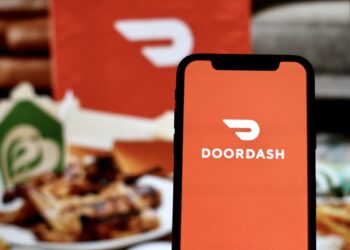Aloha POS, built by NCR, has long been a go-to point-of-sale system for restaurants.
With its deep roots in hospitality and a client list that includes brands like Outback Steakhouse and Red Robin, Aloha is clearly trusted by big players.
But how does it hold up in 2025, especially if you’re looking to combine online ordering with in-store operations?
I spent time researching how Aloha works, who it’s best for, and what you’ll actually get for your money.
If you’re managing a restaurant and considering Aloha for your business — or want to know how it integrates with ecommerce — I’ll cover everything you need to know here.
Why You Can Trust This Review
We’ve reviewed dozens of POS systems and ecommerce platforms, comparing pricing, features, integrations, and real-world usability.
All insights here are based on hands-on testing, customer feedback, and up-to-date data. We’ve also researched Aloha’s latest updates, including its newer cloud-based offering.
Aloha POS: Quick Overview
| Aloha POS | Best for restaurant chains and franchises |
|---|---|
| Rating | 3.8 out of 5 |
| Price Range | $175–$300+/month or $2,000+ setup (on-premise) |
| Strengths | Offline capabilities, loyalty tools, multi-location support |
| Drawbacks | Not ecommerce-native, expensive setup, dated UX |
| Free Trial | No standard free trial; must go through a reseller |
My Experience With Aloha POS


Getting started with Aloha isn’t as straightforward as with cloud-native tools like Square or Shopify POS.
There’s no direct signup or demo environment online. You’ll need to contact a certified NCR reseller, get a custom quote, and schedule installation or onboarding.
This process can take a few weeks, especially if you’re setting up a complex, multi-terminal system.
Once installed, the interface feels more functional than sleek. Aloha’s on-premise system can feel a little outdated, but its cloud-based version — Aloha Cloud — offers a more modern dashboard and remote access capabilities.
Still, you won’t get a DIY setup or drag-and-drop simplicity. It’s a serious POS system for serious businesses.
Aloha POS Pricing: What You’ll Pay
Aloha’s pricing depends on whether you go with on-premise software or the newer cloud-based version.
There’s no fixed public pricing for the legacy on-prem solution — costs vary by reseller, hardware needs, and number of locations. But here’s what you can expect:
On-Premise Pricing
| Item | Estimated Price |
|---|---|
| Software License | $1,200–$2,500 per terminal (one-time) |
| Hardware Package | $1,500–$3,000 |
| Setup & Installation | $500–$2,000 |
| Support Contract | $50–$150/month |
| Ecommerce Integration (via Olo, Chowly, etc.) | $50–$200/month |
Aloha Cloud Pricing
| Plan | Monthly Cost |
|---|---|
| Aloha Cloud POS (Basic) | Starting at $175/month |
| Add-ons & Integrations | Varies by app |
Key Takeaways
- Expensive upfront costs for on-prem setups
- Monthly SaaS pricing for Aloha Cloud is more predictable
- Third-party integrations for online ordering add to monthly cost
For small restaurants or startups, Aloha’s price tag can be a tough pill to swallow. But if you’re running a high-volume kitchen or managing multiple sites, it could be worth it.
Aloha POS Features: What Do You Get?
Aloha POS delivers a deep feature set tailored for hospitality businesses. Its strength is in running on-site operations efficiently, with all the tools you need to manage staff, tables, orders, inventory, and guests.
Core Features
Order Management
- Split checks, modify orders, table tracking, and quick reorders
- Multiple revenue centers for takeout, dine-in, or curbside
- Offline order mode for uninterrupted service
- Custom workflows for high-volume or quick-service models, giving restaurants more control over prep times and kitchen ticket pacing
Inventory and Menu Management
- Real-time inventory tracking
- Ingredient-level reporting (for food cost analysis)
- Menu versioning and multi-location menu updates
- Smart forecasting tools in the cloud version help restaurants minimize food waste by tracking usage trends over time
Staff Management
- Time tracking with PIN or biometric login
- Shift scheduling tools
- Labor cost forecasting
- Manager overrides and audit logs help prevent time theft and improve accountability in larger teams
CRM & Loyalty
- Guest profiles and purchase history
- Custom loyalty programs
- Email marketing integrations available via third-party apps
- Built-in features support upsell prompts and personalized offers, which can improve average ticket size over time
Reporting & Analytics
- Sales performance dashboards
- Enterprise-level reporting for franchises
- Integration with BI tools via API
- Drill-down filters let owners and managers analyze performance by server, location, daypart, or menu item for better operational decisions
While Aloha POS may not offer the flashiest interface or cutting-edge design, its real value lies in depth over flash.
The platform provides robust, restaurant-specific tools that cover nearly every aspect of daily operations — from staffing and inventory to sales tracking and guest engagement.
For operators who prioritize performance, consistency, and operational control over aesthetics or out-of-the-box ecommerce, Aloha delivers a system that can handle the pressure of high-volume service without missing a beat.
Ecommerce with Aloha POS: Is It Possible?
Aloha POS is not an ecommerce platform, but that doesn’t mean you can’t take online orders. You’ll need to use third-party tools to bridge the gap between your POS and your online storefront.
Integration Options
| Tool | Use Case |
|---|---|
| Olo | Syncs your menu and orders from your restaurant’s website or app to Aloha |
| Chowly | Connects DoorDash, Grubhub, Uber Eats directly to your POS |
| Deliverect | Centralizes online orders across platforms |
Pros
- Works well for restaurants offering online ordering or delivery
- Helps keep menu items synced between POS and online
- Preserves data across both channels
- Allows centralized control over menus and pricing across in-store and online, improving consistency for customers
Cons
- No built-in ecommerce storefront
- Can require custom development
- Adds monthly cost
- Integration complexity increases with the number of ordering platforms, which can lead to order throttling or sync delays during peak periods
If you’re running a pure ecommerce store (selling products, not food) — skip Aloha. It’s not built for that. But if you’re managing a restaurant with delivery or pickup, Aloha can work with some backend support.
Who Should Use Aloha POS?
Aloha POS is ideal for restaurants that need stability, especially ones that can’t afford any downtime or need detailed reporting across locations.
Best for:
- Full-service restaurants
- Large chains and franchises
- Businesses needing offline order support
- Multi-location operations
- Hospitality teams with high employee turnover who benefit from Aloha’s structured, role-based interface and training options
Not suited for:
- Ecommerce-first businesses
- Retail shops
- Small restaurants with tight budgets
- DIY entrepreneurs looking for plug-and-play setups
- Any business needing advanced ecommerce features, such as digital product delivery or subscription models
While it isn’t the most flexible POS on the market, it provides high operational resilience and structure — something most emerging platforms struggle with at scale.
It’s also a familiar interface in the restaurant industry, which can help reduce training time for new staff members.
Real User Feedback
Capterra: 3.8/5
“Great for reliability, but the interface is clunky and support is inconsistent.”
Software Advice: 4.0/5
“We use Aloha across our 12 locations and it works well — just takes some time to get used to.”
G2: 3.5/5
“The reporting is great, but the setup process was more painful than it should be.”
Most Common Praise
- Solid offline functionality
- Handles high-volume business with ease
- Integrates well with kitchen display systems and back-office tools
- Many users say once it’s set up correctly, it requires little ongoing maintenance — making it dependable for busy environments
Most Common Complaints
- Outdated interface (on-prem version)
- Not beginner-friendly
- Third-party integration needed for online ordering
- Some reviewers mention that resolving support issues often depends on the responsiveness of local resellers, which varies regionally
A lot of customer sentiment reflects a love/hate relationship with Aloha — it performs when needed but doesn’t offer the modern UX or instant access that many newer systems provide.
Still, for long-term operators who prioritise function over form, it remains a solid bet.
Alternatives to Aloha POS
Looking for other options? Here’s how Aloha compares to other POS systems for restaurants and ecommerce hybrids:
| POS System | Best For | Starting Price | Ecommerce Integration |
|---|---|---|---|
| Toast POS | Restaurants | Free – $165/month | Native online ordering tools |
| Square for Restaurants | SMBs | Free – $60/month | Built-in ecommerce and delivery |
| Lightspeed | Restaurants & Retail | $69/month | Good ecommerce support |
| Shopify POS | Retail & hybrid businesses | $89+/month | Seamless Shopify ecommerce |
Most of these alternatives offer a smoother ecommerce experience, but Aloha outshines them in specific areas like offline order handling, table management, and enterprise scalability.
It’s also a better match for teams that need strict operational control.
That said, if your business is just starting out or leans heavily on ecommerce, platforms like Square or Shopify POS may be more cost-effective and easier to set up.
These systems offer intuitive design, faster onboarding, and native online selling tools that don’t require third-party connectors — making them strong choices for smaller teams or digital-first operations.
Final Verdict: Is Aloha POS Worth It?
Aloha POS is a powerful system for established restaurants, especially those running multi-location operations or needing robust reporting. It’s battle-tested, reliable, and offers excellent features for managing in-person service.
But it’s not perfect:
- It’s not cloud-native by default (unless you get Aloha Cloud)
- There’s no native ecommerce storefront
- You’ll need to budget for integrations and hardware setup
- Ongoing updates and support depend heavily on your reseller, so you’ll want to choose that partner carefully
If you’re a growing restaurant with complex needs, Aloha is a solid investment.
But if you’re looking for a flexible, modern POS with ecommerce tools out of the box — tools like Square, Toast, or Shopify POS might be a better fit.






